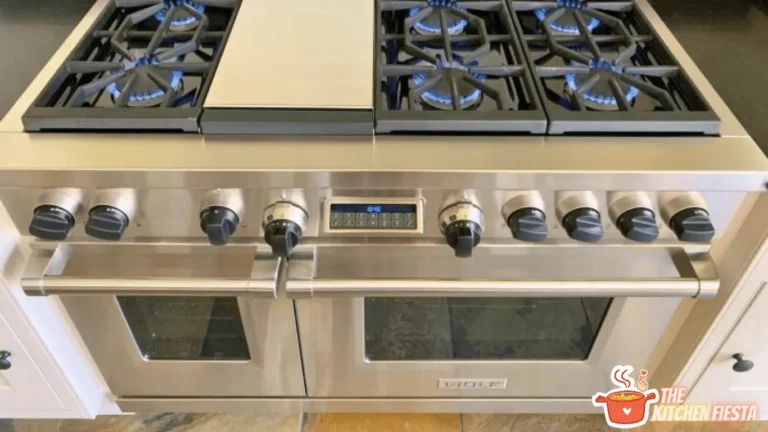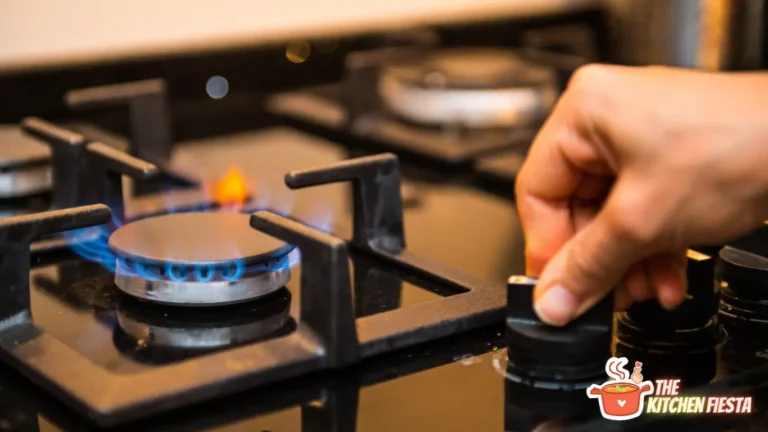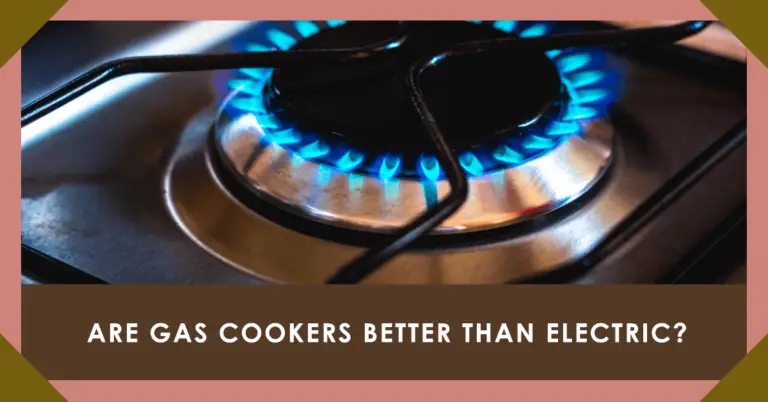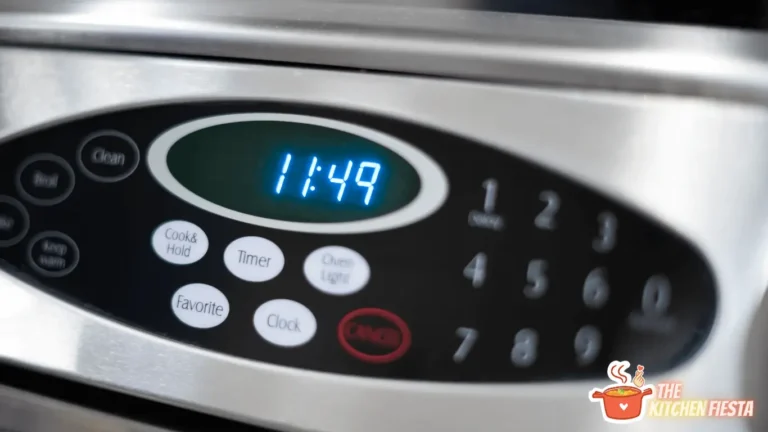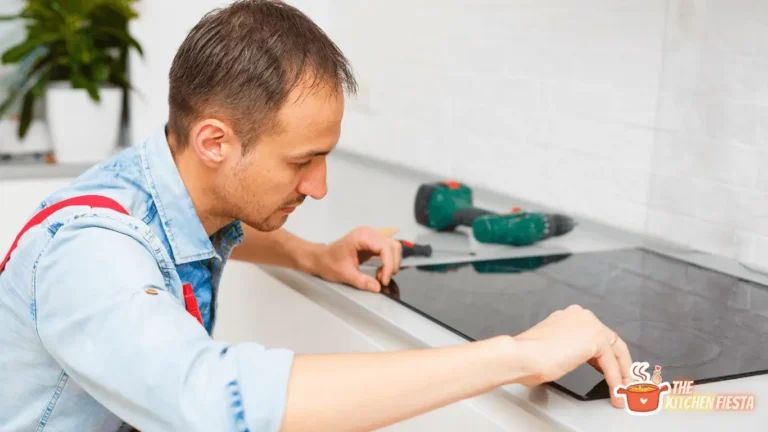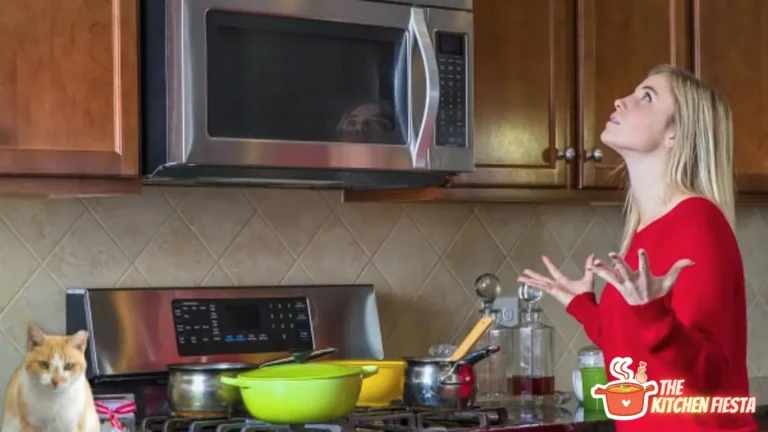Wolf Stove Won’t Stop Clicking: Troubleshooting Tips to Fix the Issue
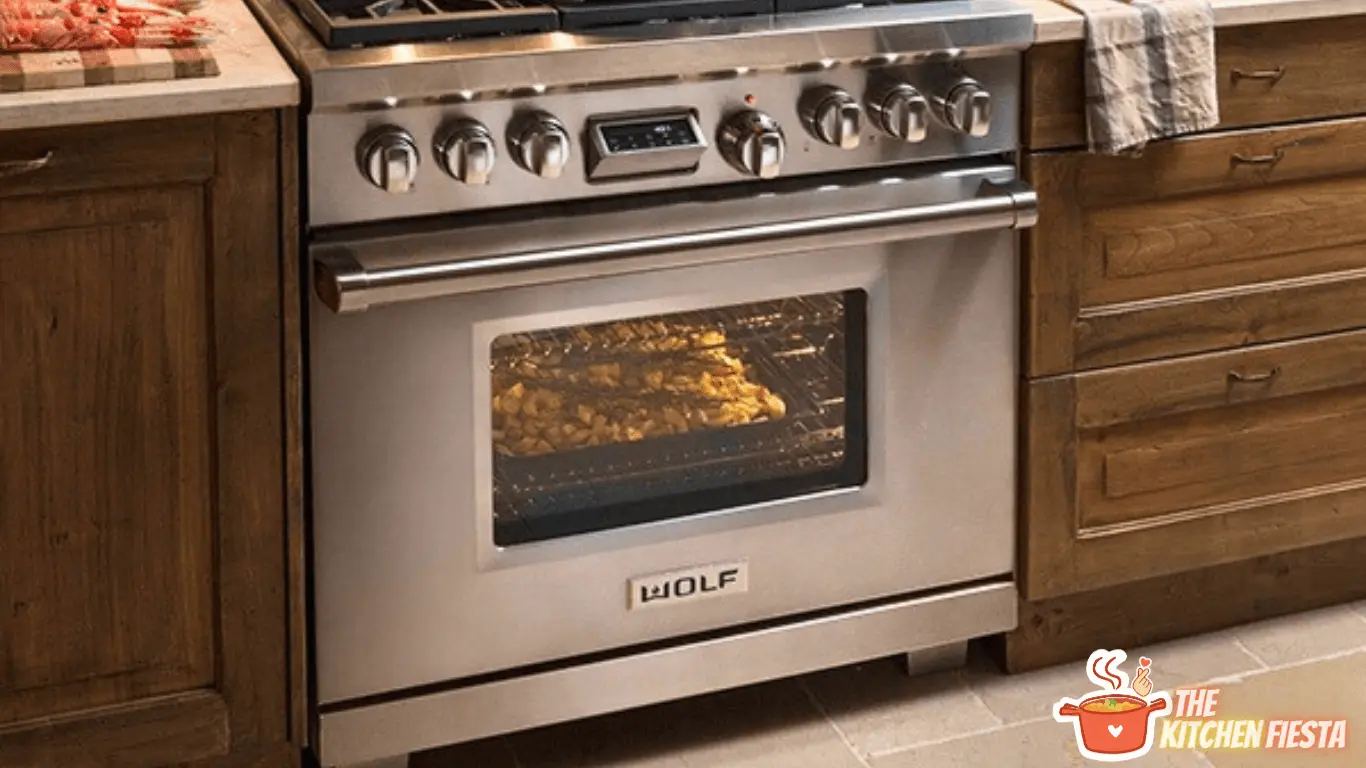
Is your Wolf stove making an obnoxious clicking noise every time you try to use it? The constant clicking coming from your stove burners can be not only annoying but also worrisome. You may be wondering: Why does my Wolf stove keep clicking?
The short answer is that the clicking noise usually indicates an issue with your stove’s ignition system. Typically, a Wolf stove clicks because of a problem with the igniter or spark module, clogged burner ports, faulty control knobs, or moisture buildup.
In this guide, we’ll walk through the key reasons a Wolf stove burner keeps clicking, explain how the stove’s ignition system works, provide step-by-step troubleshooting tips, and give DIY instructions for fixing common clicking issues. You’ll also learn maintenance best practices to stop the clicking for good.
By the end, you’ll know exactly why your Wolf stove won’t stop clicking and have the info you need to resolve the problem yourself or determine if professional repair is necessary.
What Causes a Wolf Stove to Keep Clicking?
Wolf stoves are designed to make an audible clicking noise when operating normally. The clicking comes from the stove igniters creating sparks to light the gas burners.
However, constant clicking or clicking without the burner lighting can indicate a malfunction. Here are the most common culprits of a Wolf stove that keeps clicking:
Faulty Igniter or Spark Module
The igniter and spark module are responsible for generating the spark that lights the stove burners. If either of these parts are damaged or worn out, the stove may persistently click as it tries unsuccessfully to ignite the burner. Cracked ceramic igniters and bad spark module wiring are common causes.
Clogged Burner Ports
The burner ports are the tiny holes where the gas flame emerges. If debris, food residue, or grease clogs these ports, gas flow will be restricted. This can prevent the burner from lighting, leading to repeated clicking as the stove tries to ignite.
Defective Control Knobs
The control knobs regulate gas flow to the stove burners. If the knobs are faulty, they may not be signaling the igniters properly, resulting in constant clicking even when the knob is off. Damaged control wiring can produce this symptom.
Moisture Buildup
Excess moisture around the burners or ignition components can impede sparking and gas flow. If the stove has gotten wet or combusted gas has condensed, the excessive moisture could lead to persistent clicking.
Now that you know what causes a Wolf stove to keep clicking, let’s take a closer look at how the ignition system functions normally.
Wolf Stove Ignition System Explained
Wolf stoves use an electronic ignition system to light the gas burners. Understanding how this system works can help diagnose what’s wrong when your Wolf stove won’t stop clicking. Here are the key components involved:
Igniters
Wolf stoves have electric igniters located alongside each gas burner. The igniters are made of a ceramic heating element that generates a spark when heated up by electric current. This allows the stove to create a spark to light the burner.
Spark Modules
The spark modules power the electric igniters by supplying electricity to heat them up. They contain wiring that connects to the igniters and control knobs. The spark modules manage the ignition sequencing to click and spark when a burner knob is turned on.
Control Knobs
The control knobs on the stove top regulate gas flow to the burner and activate the ignition sequence. Turning a knob initiates a signal that tells the spark module to send electricity to the adjoining igniter in order to generate a spark to light the gas.
Gas Burners
The gas burners use the methane gas supplied from the stove to produce a flame for cooking. For the burners to successfully ignite, the igniters must spark properly, gas must flow freely, and the knobs need to activate the ignition sequence.
When operating normally, turning a Wolf stove burner knob opens the gas valve and signals the spark module to heat the igniter, creating sparks to light the burner.
Problems with any of these components can lead to persistent clicking as the system tries unsuccessfully to ignite the burner. Now let’s explore the step-by-step process for troubleshooting a clicking Wolf stove.
Step-by-Step Guide to Troubleshooting a Clicking Wolf Stove
If your Wolf stove is constantly clicking, use this systematic troubleshooting guide to identify the cause and fix the problem:
1. Inspect the Burners and Clear Any Debris
Remove the burner caps and use a toothbrush, toothpick, or pipe cleaner to gently clear any food particles or grease from the burner ports. Clogged ports can prevent successful burner ignition.
2. Check for Moisture Buildup and Allow the Stove to Fully Dry
Use a dry cloth to wipe down the stove interior and burner components. Allow sufficient time for any moisture to fully evaporate before attempting to relight.
3. Test the Igniters and Spark with a Multimeter
Verify the igniters are sparking properly by conducting a continuity test. Check that electricity is flowing through by connecting a multimeter. Faulty igniters should be replaced.
4. Examine the Control Knobs and Replace If Needed
Inspect that the control knobs turn smoothly and are signaling the spark modules. Swap out any damaged knobs that are preventing proper gas flow and ignition.
5. Assess the Spark Module Wiring and Continuity
Verify the electrical connections between the spark modules, igniters, and knobs. Check for deterioration or loose wiring that could be interrupting the ignition sequence.
6. Evaluate Operation of Each Burner Individually
Try igniting each burner one-by-one to pinpoint any problem burners. This can help narrow down where the issue lies.
Following these troubleshooting steps methodically will help identify and resolve the specific cause of a clicking Wolf stove. Next we’ll explain how to fix some of the most common clicking issues.
Fixing a Faulty Igniter or Spark Module on a Wolf Stove
One of the most frequent causes of a persistently clicking Wolf stove is a damaged igniter or spark module. Here is how to fix these parts:
Locate the Igniter or Spark Module Needing Replacement
Refer to the appliance schematics to identify the location of the igniter or spark module. They are typically situated beside or beneath each burner.
Remove the Old Igniter or Spark Module
Use an socket wrench to unscrew any retaining screws or fasteners to detach the component from the stove. Be gentle when removing igniters to avoid breakage.
Disconnect Any Wiring or Electrical Connections
Make note of any wire locations that will need reconnecting to the new igniter or spark module. Use care when handling wiring to avoid pulling or severing connections.
Install the Replacement Part
Secure the new igniter or spark module in place with screws or fasteners. Reconnect any wiring according to the appliance schematics. Confirm all connections are tight.
Test Operation and Ignition
Turn on the burner knob and verify successful ignition without any clicking. If the burner fails to light or clicking persists, recheck the wiring connections.
With the faulty spark module or igniter replaced, your Wolf stove burners should ignite smoothly when turned on, eliminating that irritating clicking noise.
Unclogging Obstructed Burner Ports on a Wolf Range
If your Wolf range clicks constantly but the burners fail to ignite, clogged burner ports could be the issue. Here’s how to clean them:
Carefully Remove the Burner Caps
The burner caps lift off to expose the burner heads. Gently pry caps straight up without bending. Set caps aside in a protected area while cleaning.
Inspect the Burner Ports
Visually check the tiny burner holes for any blockages. Use a flashlight to peer inside the openings. Clogs may appear as debris, grease, or discolored burn stains.
Use a Pipe Cleaner, Toothpick, or Toothbrush to Clear the Ports
Insert a narrow pipe cleaner, toothpick, or small brush into each burner port to gently scrape away any gunk obstructing gas flow. Take care not to damage the delicate burner openings.
Remove any Large Debris with Needle-Nose Pliers
For more stubborn deposits, use pliers to gently grasp and pull out any larger material clogging the burner holes. Avoid scratching or enlarging the ports.
Wash Burners with Mild Soap and Water
If needed, use a mild solution of dish soap and water to dissolve any remaining grease. Rinse burners thoroughly and let dry completely before reattaching caps.
Unclogging the burner ports should allow proper gas flow and ignition. The burners should light smoothly without any clicking noise.
What if Wolf Stove Clicks But Burners Won’t Light?
If you’ve troubleshooted the stove ignition components and the burners are still not lighting, the issue may lie with gas supply:
- Check for a tripped circuit breaker – The stove may not be getting power. Reset any tripped breakers related to kitchen appliances.
- Inspect for gas leaks – Use a soapy water test around gas connections to check for leaks preventing gas flow. Fix any leaks before use.
- Confirm the gas supply line is opened – Make sure the shut-off valve supplying the stove is in the open position to allow gas flow.
- Test for proper burner gas pressure – Use a manometer to check the gas pressure meets appliance specifications. Irregular pressure can prevent ignition.
- Replace any damaged gas supply lines – Severed or cracked gas supply lines must be repaired to restore proper gas flow to the burners.
If inspection reveals no issues with gas supply, the stove may require professional servicing by a technician. Do not attempt to use a clicking stove that fails to ignite.
Preventing Future Wolf Stove Clicking Issues
Carrying out regular maintenance and care on your Wolf stove can help prevent annoying clicking issues in the future:
- Clean debris from burner caps and ports – Periodically remove caps to clean any food buildup in ports. Avoid spill overs.
- Wipe down stove interior – Regularly clean the stove surface to prevent grease accumulation and moisture.
- Inspect igniters and modules – Check igniters for cracks and modules for loose wiring as part of routine care.
- Confirm control knobs are in good condition – Replace any knobs that become hard to turn or slip when rotating.
- Check for gas leaks – Annually inspect for leaks to identify any deteriorated supply lines.
- Review maintenance in owner’s manual – Follow the manufacturer maintenance guidelines to keep stove in good working order.
With proper use and routine care, your Wolf stove can provide years of smooth burner ignition free of annoying clicking.
Frequently Asked Questions About Noisy Wolf Stoves
Here are answers to some commonly asked questions about troubleshooting clicking noises on a Wolf stove:
Why does my Wolf stove click multiple times before lighting?
It is normal for the stove to click a few times in the ignition sequence before the burner lights. However, if clicking persists without ignition, it likely indicates a problem.
Is it safe to use my Wolf stove if it is still clicking?
No, you should not use a stove that continues clicking without lighting. Have the stove serviced to determine and resolve the issue. Unlit gas flow can be dangerous.
Should I replace just the faulty igniter or the whole spark module?
It’s generally recommended to replace the entire spark module rather than just the bad igniter. This will ensure optimal ignition performance and prevent future issues.
Why do some burners on my Wolf stove light while others keep clicking?
This points to a localized problem with the ignition components for the clicking burner, such as a bad igniter or clogged port. Troubleshoot each burner separately.
The stove clicks but the igniters don’t spark – what’s wrong?
This indicates a problem with the spark module not sending electricity to the igniters. Inspect the module wiring for damage and check continuity with a multimeter.
Still have questions about resolving that irksome clicking on your Wolf stove? Don’t hesitate to contact Wolf customer service for troubleshooting advice tailored to your specific appliance.
When to Call Wolf Customer Service for a Clicking Stove?
While many clicking stove issues can be DIY repaired with the guidance above, it’s smart to call in a professional when:
- You smell gas coming from the stove at any time. This signals a dangerous leak requiring immediate appliance servicing.
- The burners emit smoke or make popping noises when attempting to light. The stove may need adjustment by a qualified technician.
- No troubleshooting tips have successfully stopped the persistent clicking. A Wolf repair specialist can properly diagnose and fix the problem.
- You have concerns about safely handling the gas, electrical, and ignition components involved. Stove repair poses risks if not done properly.
Wolf customer support can connect you with factory certified repair technicians in your area to service Wolf stoves. Contact them at 1-800-222-7820 for assistance stopping that aggravating clicking for good.
Take Control of Your Clicking Wolf Stove
Listening to your Wolf stove incessantly click can quickly go from annoying to alarming. But armed with the troubleshooting tips in this guide, you can confidently tackle the problem and silence the noise for good.
The key is to methodically inspect the various ignition components to pinpoint the defective part. Fixing faulty igniters, unclogging blocked burner ports, replacing damaged knobs, and addressing moisture issues will typically solve the problem.
With your Wolf stove clicking resolved, you can return to enjoying the premium performance Wolf appliances are known for. Here’s to smooth stove ignition and peaceful, quiet cooking!

